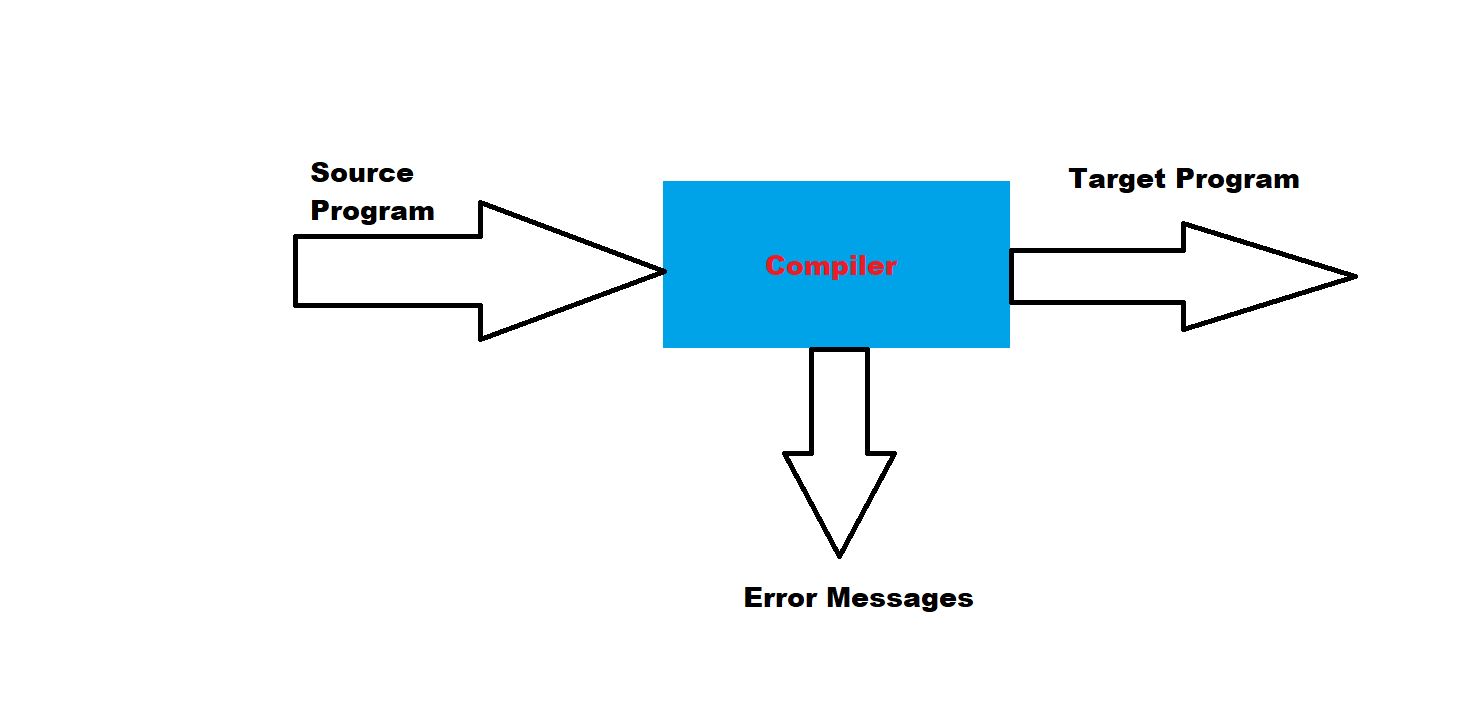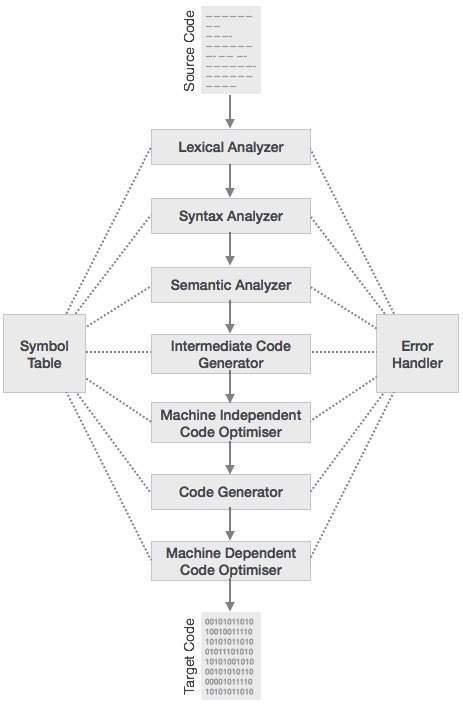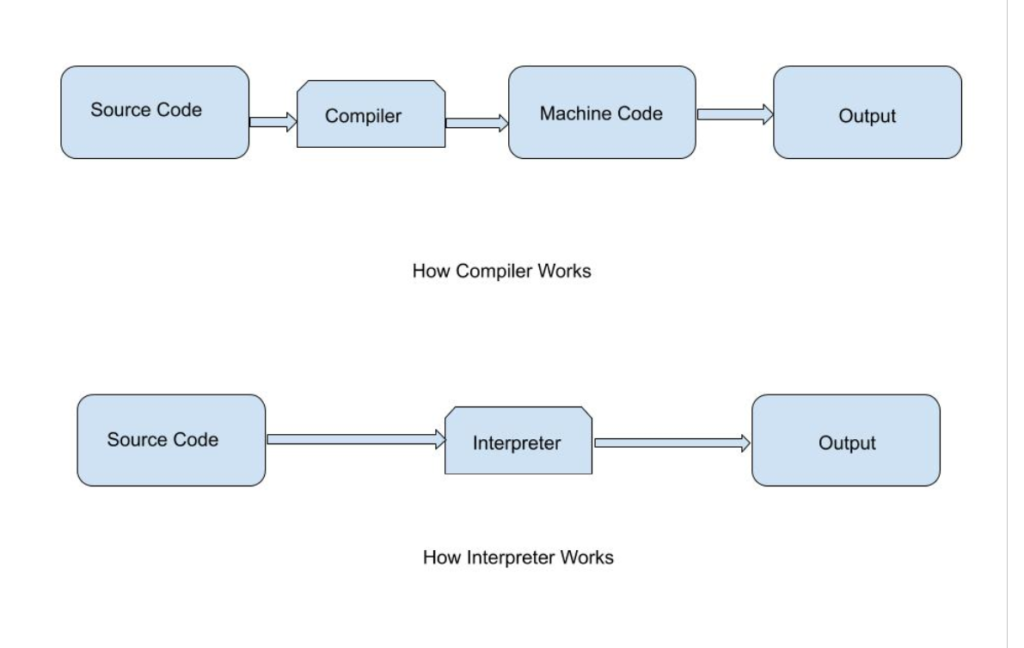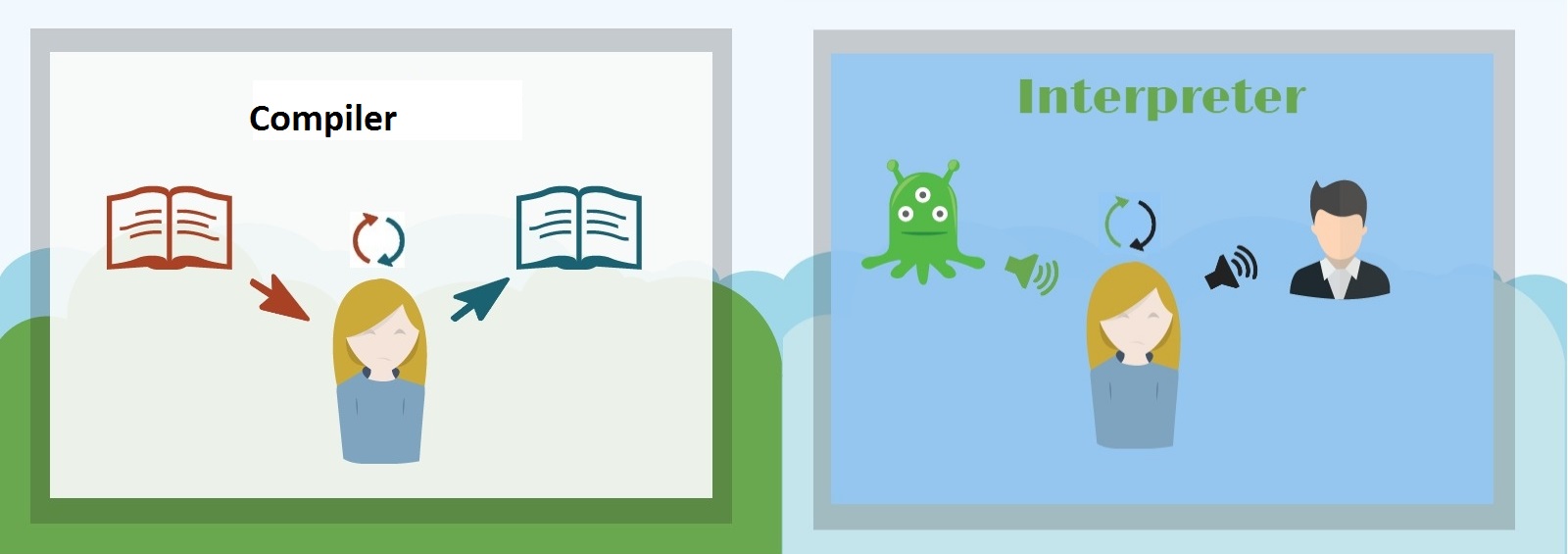 Logicmojo - Updated Jan 11, 2023
Logicmojo - Updated Jan 11, 2023
Humans, on the other hand, can understand anything using natural languages, although computers cannot. A translator is required by the computer to convert languages written in human-readable form to computer-readable form.

A language translator might be a compiler or an interpreter. What is the definition of a language translator? This is a question that may be bothering you.
A language translator is a piece of software that converts human-readable programming from a source language into corresponding programmes in an object language. The source language is usually a high-level programming language, while the object language is usually the computer's machine language.
there are two types of Translators
🚀 Compiler
🚀 Interpreter
Compilers and interpreters are pieces of system software that help make the process go more smoothly. What are compilers and interpreters, exactly? Are they one and the same? Is there a distinction between interpreters and compilers?
What are Compilers?
A compiler is a programme that reads a high-level programme and translates it to machine or low-level language, as well as reporting any problems found in the programme. It translates the complete source code in one pass or numerous passes, but in the end, the customer receives compiled code that is ready to run. The target code file that is returned can be executed multiple times with various inputs. Any future repetitions do not require the presence of the compiler.

The compiler works in phases, and the various stages can be divided into two categories:
Analysis Phase: The front end of the compiler is the analysis phase, in which the programme is broken down into its basic components and the grammar, semantics, and syntax of the code are checked before intermediate code is generated. The lexical analyzer, semantic analyzer, and syntax analyzer are all part of the analysis process.
Synthesis phase: The rear end of the compiler, where intermediate code is optimised and target code is generated, is known as the synthesis phase. The code optimizer and code generator are included in the synthesis step.
Working of the Compiler
The compiler's major task is to convert the programme into machine code and notify the programmer of any problems, ranges, limits, or other issues, particularly syntactical errors. It analyses and turns the entire programme into machine code. A compiler's operation can be divided into the following stages:
Lexical analysis: Splitting source code into lexemes, which are abstract fragments. Each of the lexemes is given a token that indicates whether it is a keyword, a string, or some other variable.
Syntax Analysis: The tokens are organised into an Abstract Syntax Tree (AST) and the syntax is verified for flaws.
Semantic Analysis: The AST is examined for semantic problems such as the assignment of the incorrect variable, the use of an undeclared variable, the use of keywords as variables, and so on.
Intermediate Code Generation: The compilation process produces two or more intermediate code representations.
Code generation: The source programme is turned to an object programme once the compiler turns the intermediate optimised code into machine code.

Interpreter
The interpreter is a programming language implementation alternative that performs the same functions as a compiler. Similar to a compiler, an interpreter does lexing, parsing, and type checking. However, rather of creating code from the syntax tree, the interpreter processes it directly to access expressions and execute statements.
A compiler is faster than an interpreter because it compiles the entire programme at once, whereas interpreters compile each line of code separately.

What is the point of having an interpreter when we already have a compiler?
When a compiler fails to meet the software development needs, an interpreter is required. The compiler is an extremely powerful tool for creating high-level applications. The compiler, on the other hand, has a number of drawbacks. If the source code is large, compiling the source code could take many hours. This will greatly lengthen the compilation process. Here, an interpreter comes in handy, since it can shorten the length of this lengthy compilation. One-instruction interpreters are meant to translate and execute single instructions at a time.
When you have a lot of source code to update, an interpreter comes in helpful. As if compiling the complete source code took 5 minutes. If you've updated it five times in a row. The overall compilation time would thus be 25 minutes, which is a substantial amount of time. However, if we utilise an interpreter, we can cut down on the time it takes to compile. We can draw the following conclusions from the preceding points:
⮞ Because the compiler generates object code for the entire programme at once, it uses more memory than the interpreter.
⮞ In contrast to the compiler, which displays all faults simultaneously, making it impossible to discover errors, the interpreter displays errors of each statement one at a time, making it easier to spot problems.
⮞ In the case of a compiler, intermediate or target code is generated. The interpreter, on the other hand, does not generate intermediate code.
Difference Between Compiler and Interpreter
While Compiler and Interpreter appear to do the same thing by converting programmes into machine code, there is a fine line between the two. The following are the distinctions:
| Compiler | Interpreter |
|---|---|
| difference between compiler and interpreter. | In an interpreter, the programme is examined line by line. |
| compiler is used to compile the code. | There is no way to save machine code.so Disk storage saved the code |
| The programme is only executed when the full programme has been compiled. | The programme is executed after each line has been evaluated, and so any errors are raised line by line. |
| The compilation produces an output programme that does not require the source file to run. | Because the interpretation does not provide an output programme, it must be assessed at each execution. |
| At the completion of the compilation, all errors are displayed, and the programme cannot be run until the error is rectified. | From line to line, the errors are displayed. The software continues to execute until the error is located and resolved. |
| The compiler generates intermediate or object code. | There are no intermediate code forms generated by the interpreter. |
| Compiler-based programming languages include C, C++, C#, and Java. | Interpreter-based programming languages include PHP, PERL, and Ruby. |
Conclusion
Because both interpreters and compilers have been around for a long time, there is a wealth of information available on both types of translators. There are many alternative techniques to developing a compiler versus an interpreter from an implementation standpoint.
Good luck and happy learning!






